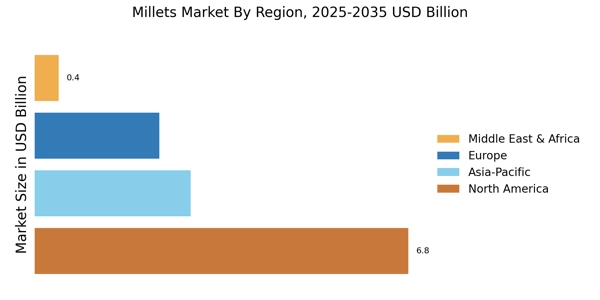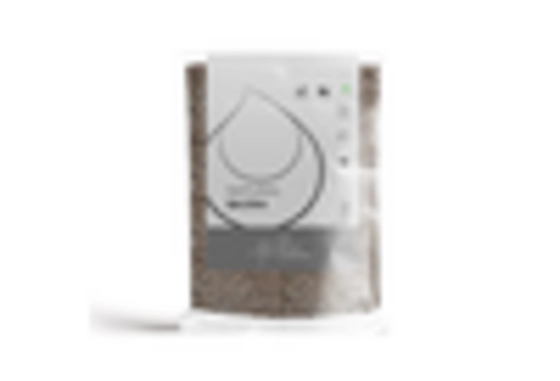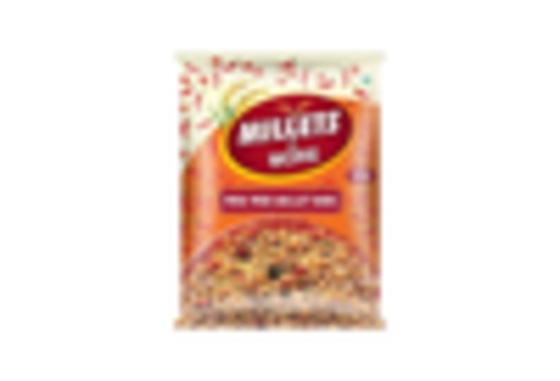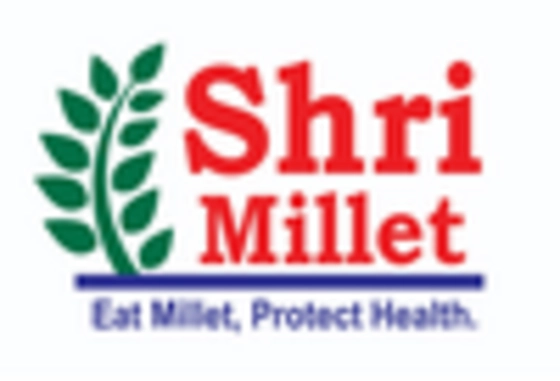Rising Health Awareness
The increasing awareness regarding health and nutrition among consumers appears to be a pivotal driver for the Millets Market. As individuals become more conscious of their dietary choices, the demand for nutritious and gluten-free alternatives has surged. Millets Market, known for their high fiber content, essential vitamins, and minerals, are gaining traction as a superfood. Recent data indicates that the consumption of millets has risen by approximately 20% in various regions, reflecting a shift towards healthier eating habits. This trend is likely to continue as more consumers seek out natural and organic food options, thereby propelling the growth of the Millets Market.
Innovation in Food Products
The Millets Market is witnessing a wave of innovation, with manufacturers developing a diverse range of millet-based products. From snacks to ready-to-eat meals, the introduction of new and convenient food options is attracting a broader consumer base. This trend is supported by the growing interest in plant-based diets and the need for gluten-free alternatives. Recent market analysis suggests that the millet-based product segment is projected to grow at a compound annual growth rate of 15% over the next five years. This innovation not only caters to health-conscious consumers but also enhances the visibility and appeal of millets in the food industry.
Cultural and Culinary Revival
The resurgence of traditional grains, including millets, is indicative of a cultural and culinary revival that is influencing the Millets Market. As chefs and food enthusiasts explore ancient grains, millets are being reintroduced into modern cuisine, showcasing their versatility and flavor. This revival is not only about nutrition but also about reconnecting with heritage and traditional cooking methods. The increasing popularity of millet-based recipes on social media platforms and cooking shows is likely to inspire more consumers to incorporate millets into their diets. This cultural shift is expected to further drive the growth of the Millets Market, as it aligns with the trend of seeking authentic and wholesome food experiences.
Government Policies and Support
Government initiatives aimed at promoting millets cultivation and consumption are playing a significant role in shaping the Millets Market. Various countries have introduced policies to encourage farmers to grow millets, recognizing their nutritional benefits and resilience to climate change. For instance, subsidies and financial assistance programs have been implemented to support millet farmers, enhancing production capabilities. Additionally, awareness campaigns are being launched to educate consumers about the health benefits of millets. Such government backing is expected to bolster the Millets Market, fostering growth and increasing accessibility to these nutritious grains.
Sustainability and Environmental Concerns
Sustainability has emerged as a crucial factor influencing consumer preferences, particularly in the Millets Market. As environmental issues gain prominence, millets are recognized for their low water and resource requirements compared to traditional cereals. This characteristic positions millets as an eco-friendly choice, appealing to environmentally conscious consumers. Furthermore, the cultivation of millets contributes to soil health and biodiversity, aligning with sustainable agricultural practices. The increasing emphasis on sustainable food sources is likely to drive demand for millets, as consumers and producers alike prioritize environmentally responsible options.


















Leave a Comment